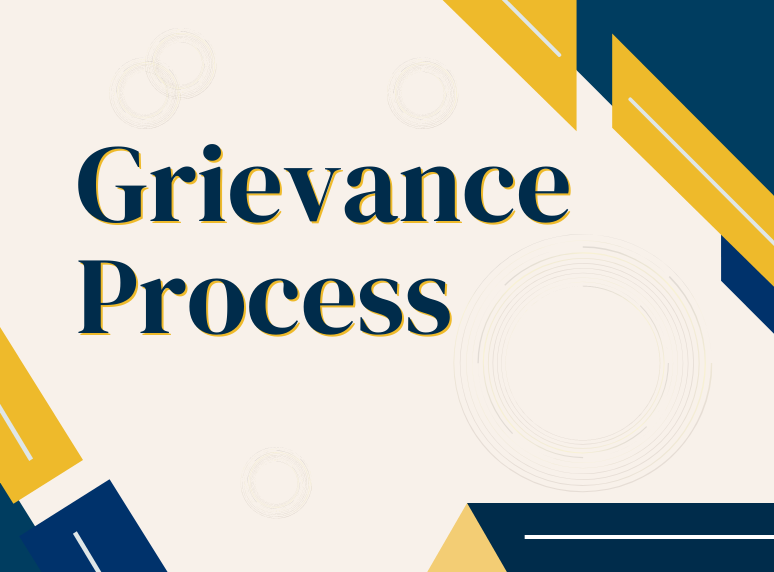One of the most useful tools a contract provides you with is the grievance procedure. Often employees think filing a grievance will label them as a “troublemaker,” but really the grievance process is just that—a process, which we use to resolve violations of our rights in a professional, orderly manner.
A “Grievance” is a formal written allegation by a grievant that he/she has been adversely affected by a misinterpretation, misapplication, or alleged violation of a specific provision of the collective bargaining agreement or incorporated Board policies. A “Grievant” may be CSEA or any member(s) of the bargaining unit. Unless specifically mentioned otherwise, a “Day” is any day on which the central administrative office of the District is open for business and the unit member(s) is (are) scheduled to work.
The “Immediate Supervisor” is the lowest level management member having a line supervisory authority over the grievant who has been designated to adjust grievances. The “Second Level Supervisor” is the supervisor of the management member defined above as an “Immediate Supervisor”.
Grievance Procedure
The CSEA contracts contain a two-step grievance process. Remember, to consult your contract to understand the grievance process and timelines.
Informal Level:
Before filing a formal written grievance, (Appendix B) the grievant shall attempt
to resolve the problem by scheduling an informal conference with his/her immediate supervisor. The grievant may be accompanied by his/her Association Representative at the informal conference with the immediate supervisor.
The problem shall be discussed orally, including the nature of the problem, the person or persons involved, and the remedy sought. The immediate supervisor shall respond to the complaint within three (3) days. If the grievant is not satisfied with the proposed resolution or if the immediate supervisor has not responded within three (3) days of the formal conference, the grievant may proceed to Step One of the Formal Grievance Process.
Formal Level:
Step One:
- Within twenty (20) days after the occurrence of the act, or omission giving rise to the grievance, or the date when the grievant should reasonably have been aware of the act or occurrence, the grievant must submit his/her grievance to his/her immediate supervisor in writing using a District classified grievance form.
- This grievance statement shall be a clear, concise statement of the circumstances giving rise to the grievance, citation of the specific article(s), section(s), and paragraph(s) of the collective bargaining agreement or incorporated Board policies that is (are) alleged to have been violated, the names of persons who witnessed or have first-hand knowledge of the grievance, and the remedy sought. The grievance shall be signed by the grievant.
- The immediate supervisor or his/her designee shall respond in writing within five (5) days after the receipt of the grievance at Step One.
- If the grievant is not satisfied with the decision of the immediate supervisor, the grievant may within five (5) days of receipt of the immediate supervisor’s response, request on the proper District grievance form that the grievance procedure to Step Two.
Step Two:
- The grievant shall submit to his/her second-level supervisor a copy of the original grievance form, a copy of the first-level supervisor’s response, and a signed, written statement of the reason for the appeal and the resolution requested. The second-level supervisor, or his/her designee, shall respond to the grievance in writing within five (5) days after the receipt of the grievance at Step Two.
Step Three:
- If the grievant is not satisfied with the decision rendered in Step Two, the grievant may submit the grievance in writing to the District Superintendent within five (5) days after the receipt of the response in Step Two. The Superintendent, or his/her designee, will respond in writing within five (5) days of receipt of the said grievance.
Step Four:
- If not satisfied with the decision at Step Three, the grievant may, within five (5) days from the Step Three decision being rendered, submit a request in writing to the Superintendent that the grievance be submitted to the Board.
- A hearing shall be conducted by the Board at the next regularly scheduled Board meeting or at a mutually agreeable time but in no event, more than ten (10) days after the request for a hearing has been received.
- A hearing shall be conducted in an informal manner with only those having a legitimate interest in the problems at issue allowed to attend. The Board may admit evidence and testimony regarding incidents and occurrences that antedate the event giving rise to the grievance if they conclude that they have sufficient relevance as background information. They may also take further testimony they deem necessary. The hearing shall be conducted in accordance with fundamental rules of fairness and due process.
- The Board shall render written findings, conclusions, and recommendations within ten (10) working days of the termination of the hearing. The findings, conclusions, and recommendations shall be sent to the parties concerned and to the Superintendent for implementation.
Step Five: Binding Arbitration
- If the grievant is not satisfied with the decision of the Board,
- he/she may within five (5) days submit a request in writing to the Superintendent for binding arbitration of the dispute.
- The grievant and the District shall attempt to agree upon an arbitrator. If no agreement can be reached, either party shall request the California Conciliation Services to supply a panel of five (5) names of persons experienced in hearing grievances in public schools. Each party shall alternately strike a name until only one name remains. The remaining panel member shall be the arbitrator. The order of the striking shall be by lot.
- The fees and expenses of the arbitrator and the hearing shall be borne equally by the District and the grievant. All other expenses shall be borne by the party incurring them.
- The arbitrator shall, as soon as possible, hear evidence and render a decision on the issue or issues submitted to him/her. If the parties cannot agree upon a submission agreement, the arbitrator shall determine the issues by referring to the written grievance and the answers thereto at each step.
- The arbitrator shall have no power to add to, subtract from, or modify the terms of this Agreement or the written policies, rules, regulations, and procedures of the District. California Conciliation Services rules shall govern.
- After a hearing and after both parties have had an opportunity to make written arguments, the arbitrator shall submit his/her findings and recommendations to all parties. Absent mutual agreement of the parties to the contrary, the arbitrator’s decision shall be submitted to the parties within thirty (30) days after the completion of the hearing.
- The arbitrator’s decision shall be final and binding on the parties.
Grievance Meetings
The immediate supervisor, second-level supervisor, and/or District Superintendent, or his/her designee, may schedule such meetings with the grievant as deemed appropriate to discuss the grievance and attempt resolution at Steps One, Two, and Three. The grievant shall be present at all grievance meetings. The absence of the grievant at a meeting shall constitute a waiver of the grievant’s right to further processing of the grievance. In instances of emergency or illness, the grievant shall have the right to have the meeting rescheduled.
The grievant is entitled to association representation at all steps of the grievance procedure specifically at every meeting between the grievant and a district administrator. Should the grievant elect not to be represented by the Association, the District shall notify the Association of any settlement reached. The settlement shall not violate the terms and conditions of the collective bargaining agreement.
In Conclusion
As you can see, the grievance procedure is there for us—but only if we use it. This article is just to show you an overview of the rights and tools that we as CSEA employees can utilize to fight for your rights. Take a moment to review the grievance procedure in your contract.


Leave a Reply
You must be logged in to post a comment.